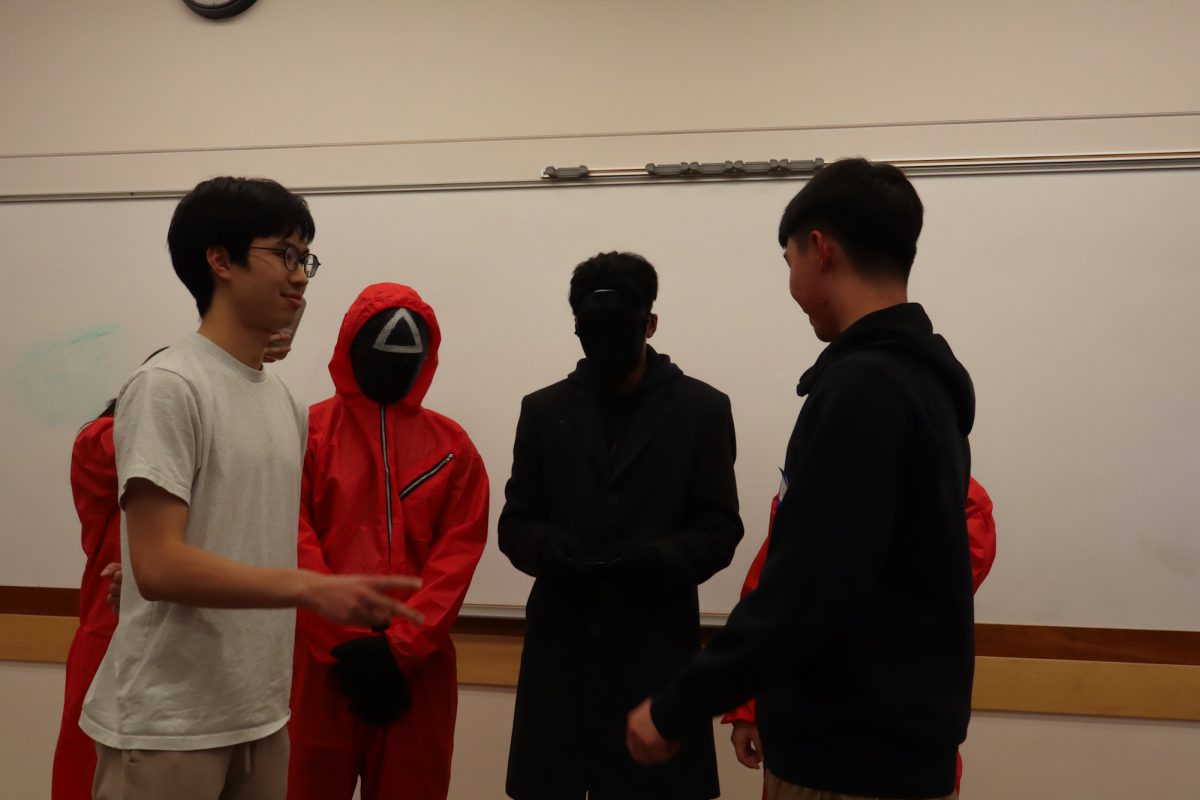Electronic music god creates future classic
September 25, 2001
In the pantheon of the gods of electronic music, Richie Hawtin time and time again confirmed his place in the upper hierarchy. His newest release, “DE9 Closer to the Edit,” perhaps one of his most ambitious efforts, has proven that he hasn’t lost it yet.
When people generally think of the word “techno,” they imagine anything electronic. However, techno is merely a genre of electronic music, much like heavy metal is a genre of rock. As in rock, every so often there will be a record that blows the listener away.
This is one of those records.
Hawtin’s take on the music that was spawned in the Motor City has always been a slight divergence from the norm. “DE9” is no different. When recording the album, Hawtin took over 100 records and sampled each one down to a single note or a lonely bar, then took 70 of his choice samples and compiled them on 31 tracks.
Each track is literally filled with the rich history of electronic music that Hawtin’s music is steeped in. Many tracks have portions that have been taken from seminal producers like Ricardo Viallobos, Carl Craig, and Hawtin’s own releases as Plastikman.
Overall, DE9 has a minimal feel. At times there is nothing but a reverberating bass beat, but in other tracks, Hawtin will layer samples over each other, creating a complex symphony of sounds.
Though Hawtin has moved toward a minimalist direction, he hasn’t forgotten his roots. Throughout the album, there is the same industrial, mechanistic feeling that was relayed with the original productions by his Detroit predecessors.
As before, Hawtin manages to put out some of the best techno around, and also pay homage to all that have come before him. Years from now, this record will be on the list of the best electronic music ever made.
-Josh Nelson
In 1996, Jay-Z busted on the scene with the highly acclaimed album “Reasonable Doubt.” Five years and five albums later, Jay-Z aka Jigga aka Hova comes out with his highly anticipated album “The Blueprint.”
Hova has been considered great but never has gained the acclaim, credibility and savvy as the late rappers Notorious B.I.G. and Tupac. So, with that in mind and many MCs taking shots at his “crown,” Jigga had to battle back on this album and show everyone the “blueprint” for rap and hip-hop. Although the production features everyone from Timbaland to The Trackmasters, this album falls short of actually being a “blueprint.”
“The Blueprint” fails to live up to its title because the album gives the listener nothing new or different than anything from Jay-Z’s previous four albums.
Take for instance the tracks “H to the Izzo,” “Hola HoVita” and “Jigga that N****.” Each song is the same monotonous material and scheme Jay has showed us before. The songs seem uninspired – just jiggy tracks for the club to bop to -with no “blueprint” or supreme rhyme scheme he claimed he was going to bring on every track on the album.
Jay-Z holds true to form on the media- and society-inspired tracks “Heart of the City (Ain’t No Love)” and “Renegade” featuring Mr. Slim Shady himself. Eminem and Jay-Z hold the mic well, verbally going back and forth. Eminem drops jewels for all his critics when he says “I ain’t no politician but I’ll kick it with `em a minute/ Cause see they call me a menace/ and if the shoe fits I’ll wear it/ But if it don’t, then y’all’ll swallow the truth, grin and bear it.”
The album has more tight tracks like the girl-friendly “Girls, Girls, Girls” featuring Slick Rick, Q-Tip and Biz Markie. “The Blueprint” also features the personal track “Song Cry” in which Jay feels “I can’t see ’em comin’ down my eyes/ So I gotta make the song cry.”
The album still brings some great trunk bangers with the songs “All I Need” and “U Don’t Know” where he lays it down for all the doubters when he says “You are now lookin’ at one smart black boy/ Momma ain’t raised no fool.”
“Takeover” is the track where Jigga gets back at rappers Nas and Prodigy for their lyrical jabs at him. He wittily puts together a great lyrical scheme when he says, “R.O.C. too strong for y’all/ It’s like bringin’ a knife to a gunfight, pen to a test.” The track is great but he still doesn’t get back at Nas for his freestyle track “Stillmatic (H to the Homo).”
An album with only 13 tracks is uncharacteristic for Hova, considering he usually puts more songs on an album. But the hidden surprise is the two bonus tracks after the final track, “Blueprint.” He gives you a “Girls, Girls, Girls” remix and “Breathe Easy.”
Jay-Z doesn’t give the fans much new material on “The Blueprint,” but he still gives the people something to dance to and feel. There is no new quality for Jay-Z on this album, but he holds down his crown. However, he still is not ready to join the ranks of Tupac and Notorious B.I.G.
-Darryl Frierson
What do you get when you combine three eccentric personalities, three different musical styles and millions of faithful followers into one puzzling supergroup? Oysterhead is substance of acquired taste, but Primus and Phish fans especially are encouraged to close their eyes and take a bite.
It all started when a New Orleans-based promoter asked Les Claypool, Primus’ quirky, bass-slapping frontman, about putting on a one-time concert with a few other artists. Claypool immediately thought of Trey Anastasio, the Phish frontman known as a sort of god to a fanbase that rivals that of Grateful Dead, and the two stumbled upon former Police drummer Stewart Copeland, with whom Les has collaborated on his latest Primus album.
Together they form Oysterhead, the most bizarre complimentary midnight snack to come along since peanut butter sandwiches and bananas, ketchup and mashed potatoes, or French fries and chocolate shakes. Perhaps that was a poor example.
Primus and Phish have had radically different musical careers, but they have more in common than you might think. Neither of them has had exceptional commercial success, and it doesn’t matter. The buzz from armies of devoted fans that surround this creation are something that cannot be ignored, although MTV will take little notice.
Rumor has it that at Oysterhead’s debut concert, someone in the perpetually grooving crowd held a $2,000 ticket. They are here, and you will hear them; whether you are shaking your head at the weirdness or indulging in the fun is up to you.
Oysterhead’s first album, “The Grand Pecking Order,” succeeds in combining all three musicians’ skills rather than making the songs an alternating parade of solos. The affectionately nasally-voiced Claypool throws in his trademark descriptions of skewed characters and oddly-timed bass lines. Anastasio adds Phish’s trademark on-the-spot, trippy lyrics and brisk but often laid-back style of guitar. Copeland lays the rhythm on top as a tidy compliment that unifies the two styles.
Some songs show the distinct personality of either singer. The title track is a true example of Primus style with an exaggerated walking bass line and crazy vocals that at times are reminiscent of singing muppets on some sort of twisted children’s show.
“Shadow of a Man” also shows Claypool’s odd way of storytelling. Anastasio’s style really shines through on songs like “Radon Balloon” which leaves the listener feeling relaxed enough to “dance across the treetops” because “drifting is a simple thing to do.” The song “Wield the Spade” echoes earlier Phish jams — quick, light and toe-tapping.
Other songs such as “Oz is Ever Floating” and “Army’s on Ecstasy” will make you want to groove.
Most of the album seems to be a perfect mix of everyone’s individual flavor, and once you become accustomed to the taste, you may be surprised to find yourself returning for seconds.
“Come on kiddies, gather round/ There’s a new sensation hittin’ town.”
Whether it is for you or not, you’ll just have to try it for yourself.
-Ashley Crone






